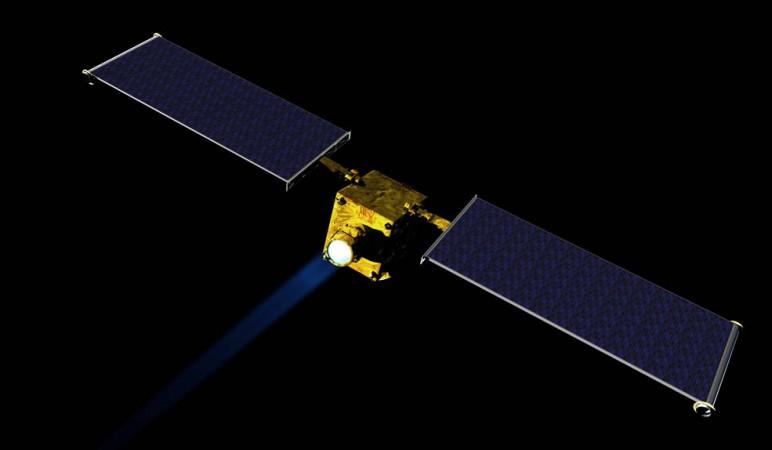NASA is getting ready to come up with its pioneering mission to deflect an asteroid. The space agency believes this step would provide them with some important lessons about safeguarding Earth from potentially destructing space rocks and other life destroying impacts.
Also Read: NASA explores tropical storm Nanmadol inside and out using 2 satellites
This space probe is called -- Asteroid Impact and Deflection Assessment (AIDA) mission. The Double Asteroid Redirection Test (DART) spacecraft, which will be used in this mission, is now moving to the design phase following NASA's approval on June 23, 2017.
The DART aims at showing the kinetic impactor technique in which it would hit an asteroid and find out whether it would be able to deflect the path of the space rock or not.

"DART would be NASA's first mission to demonstrate what's known as the kinetic impactor technique -- striking the asteroid to shift its orbit -- to defend against a potential future asteroid impact," said Lindley Johnson, planetary defence officer at NASA Headquarters in Washington.
"This approval step advances the project toward a historic test with a non-threatening small asteroid," Johnson added.
An asteroid named Didymos which will have a distant approach to Earth in 2022 and then in 2024 is the target for DART spacecraft. The space rock Didymos means "twin" in Greek.
It is an asteroid binary system which comprises of two bodies -- Didymos A, about one-half mile (780 meters) in size and a smaller asteroid orbiting it called Didymos B, about 530 feet (160 meters) in size. These two bodies orbit each other as well as the Sun. DART's mission would be to impact the smaller asteroid, Didymos B.
The astronomers have assessed this asteroid binary system closely since 2003. Didymos A is a rocky S-type object having a composition similar to other many other asteroids. Didymos B has an unknown composition and its size is typical of asteroids that could potentially create regional effects should they impact Earth.
"A binary asteroid is the perfect natural laboratory for this test," said Tom Statler, program scientist for DART at NASA Headquarters.
"The fact that Didymos B is in orbit around Didymos A makes it easier to see the results of the impact, and ensures that the experiment doesn't change the orbit of the pair around the Sun."
According to the mission, DART would fly towards Didymos and use an onboard autonomous targeting system to aim towards the Didymos B at a pace of 3.7 miles per second (6km per second) which is equal to nine times the speed of a bullet.
"Earth-based observatories would be able to see the impact and the resulting change in the orbit of Didymos B around Didymos A, allowing scientists to better determine the capabilities of a kinetic impact as an asteroid mitigation strategy," a NASA statement revealed.
"DART is a critical step in demonstrating we can protect our planet from a future asteroid impact," said Andy Cheng of The Johns Hopkins Applied Physics Laboratory in Laurel, Maryland, the DART investigation co-lead.
"Since we don't know that much about their internal structure or composition, we need to perform this experiment on a real asteroid. With DART, we can show how to protect Earth from an asteroid strike with a kinetic impactor by knocking the hazardous object into a different flight path that would not threaten the planet," Cheng concluded.

















